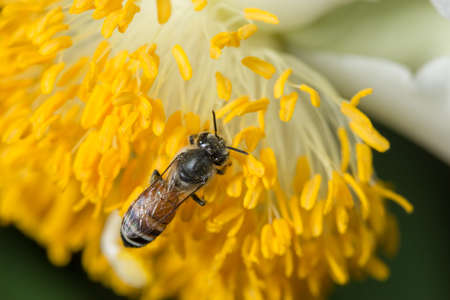Understanding Companion Planting in the UK Climate
In the heart of every British garden, from charming cottage plots to bustling allotments, lies a quiet wisdom: plants thrive best when they work together. Companion planting is an age-old gardening practice that pairs certain plants to encourage healthy growth, attract helpful pollinators, and naturally ward off pests. But what makes companion planting especially effective here in the UK? Our famously changeable weather—think gentle mists, sudden showers, and rare bursts of golden sunshine—creates unique conditions for both plants and insects alike. Traditional British gardens, shaped by centuries of trial and error, have long relied on clever plant partnerships to keep crops flourishing despite unpredictable climate swings. By choosing the right companions, gardeners can harness nature’s own strategies to nurture robust vegetables and dazzling blooms while inviting bees and butterflies to dance among their borders. In this article, we’ll explore how thoughtful companion planting is perfectly suited to Britain’s distinctive climate and cherished gardening traditions, offering practical ways to make your garden both resilient and welcoming for wildlife.
Inviting Pollinators: Attracting Bees, Butterflies, and More
Welcoming pollinators into your garden is like inviting a chorus of nature’s most diligent helpers. In the UK, where native bees, butterflies, and hoverflies play vital roles in pollination, companion planting becomes an engaging family project. By selecting the right plants and arranging them thoughtfully, you can nurture a haven for these beneficial insects while teaching children about their importance.
Choosing Native Plants for Pollinator Appeal
Native British plants are especially attractive to local pollinators, as they have evolved together over time. Consider planting in clusters rather than single specimens—this makes it easier for pollinators to find food sources. Here are some family-friendly choices to get started:
| Plant | Pollinator Attracted | Best Planting Time |
|---|---|---|
| Foxglove (Digitalis purpurea) | Bees | Spring |
| Buddleia (Butterfly Bush) | Butterflies | Late Spring |
| Wild Marjoram (Origanum vulgare) | Bees & Hoverflies | Spring |
| Cowslip (Primula veris) | Bees & Moths | Autumn or Spring |
| Lavender (Lavandula angustifolia) | Bees & Butterflies | Spring |
Family-Friendly Planting Layouts
Create a patchwork of colour by mixing flowering times and heights. Children can help design simple layouts—perhaps a butterfly corner or a bee boulevard! Place taller plants like foxgloves at the back of borders and smaller ones such as marjoram near the front. Interplant flowers with vegetables to maximise both beauty and productivity.
A Garden Adventure for All Ages
Involve every member of the family by giving each person responsibility for “their” pollinator plant. Keep a journal together, noting which insects visit and when flowers bloom. This hands-on approach fosters curiosity and stewardship—a wonderful legacy for young gardeners.
Tops Tips for Success
- Avoid pesticides wherever possible; they can harm pollinators.
- Provide water sources—shallow dishes with pebbles are perfect for thirsty bees.
- Leave some wild corners or patches of nettles for caterpillars and solitary bees.
- Rotate crops annually to keep habitats fresh and healthy.
The more welcoming your garden is to pollinators, the more productive—and enchanting—it becomes. With thoughtful companion planting, families across the UK can create outdoor spaces buzzing with life and learning.

3. Natural Pest Prevention: Classic British Plant Partnerships
One of the joys of gardening in the UK is discovering how the wisdom of generations past can still bring harmony and health to our plots today. By observing nature and learning from traditional practices, we can create garden beds that not only look charming but also work cleverly to keep pests at bay—no chemicals required! Let’s step into our green space with curiosity and a sense of connection to Britain’s gardening heritage, drawing inspiration from time-honoured companion planting combinations.
Marigolds & Vegetables: The Cheerful Defenders
No classic British allotment would be complete without a border of marigolds. Their bright, sunny blooms aren’t just for show; they release a scent that deters aphids, whitefly, and even nematodes below ground. Nestle French marigolds among your tomatoes, carrots, or beans, and watch as these cheerful flowers stand guard—just as they’ve done in cottage gardens for centuries.
Onions & Carrots: A Mutual Shield
Another much-loved duo is onions and carrots. Onions’ pungent aroma masks the scent of carrots, confusing carrot root fly, while carrots similarly deter onion flies. This mutual protection is a staple trick passed down through generations, making it a must-try for family gardeners keen on both tradition and effectiveness.
Sage & Brassicas: Herb Allies
If you grow cabbages or Brussels sprouts—a true taste of Britain—consider planting sage nearby. This fragrant herb helps repel cabbage moths and flea beetles, reducing the need for netting or sprays. Sage’s silvery leaves are also a sensory delight for little hands to explore during garden adventures!
Chives & Roses: Old-Fashioned Rose Guardians
Even ornamental borders benefit from companion planting. Chives have long been planted beneath rose bushes in English gardens to help prevent black spot and deter aphids. Their soft purple flowers add an extra splash of colour come late spring, all while quietly protecting their floral friends.
By weaving these classic plant partnerships into your own plot—whether it’s a sprawling allotment or a few pots on the patio—you’re honouring Britain’s rich gardening traditions while nurturing a resilient ecosystem for pollinators and people alike. Isn’t it wonderful when heritage wisdom helps both our plants and our families flourish?
4. Child-Parent Planting Projects: Growing and Learning Together
There’s something truly special about nurturing a garden together as a family—especially when your planting choices not only brighten your patch but also attract pollinators and keep pests at bay. Let’s take inspiration from the way certain plants support each other, creating fun and interactive projects for children and parents to enjoy right here in the UK.
Simple Companion Planting Ideas for Little Hands
Children love getting involved in practical activities, and companion planting offers endless opportunities for hands-on learning. Whether you have a tiny patio or a larger garden space, these child-friendly projects help everyone understand how nature works together—just like families do!
Classic UK Companion Combinations
| Plant Pair | Why They Work Together | Fun Family Activity |
|---|---|---|
| Carrots & Onions | Onions deter carrot fly, while carrots help onions by keeping the soil loose. | Sow seeds in alternating rows; let children spot the differences as they grow. |
| Marigolds & Tomatoes | Marigolds repel aphids and whitefly, protecting tomatoes naturally. | Let kids plant marigold seedlings around tomato plants and track which insects visit. |
| Nasturtiums & Beans | Nasturtiums lure aphids away from beans and attract beneficial pollinators. | Create a “pollinator corner” together by sowing both seeds in one spot. |
| Basil & Strawberries | Basil helps repel pests from strawberries while enhancing their flavour. | Try a taste test: compare strawberries grown with basil to those without! |
Storytelling Through Plant Partnerships
Turn your gardening time into story time! Share tales about how marigolds bravely guard tomatoes or how beans climb up sweetcorn like best friends helping each other reach the sun. Encourage your child to name their favourite plant pairs and imagine what they might say if they could talk. This not only sparks creativity but also deepens their understanding of why we choose certain combinations for both beauty and benefit.
Tips for Success in UK Gardens
- Choose native varieties: Pick plants well-suited to the local climate for better results.
- Get messy: Let children dig, water, and even make mistakes—learning is all part of the fun!
- Observe together: Keep a shared journal to note which insects visit your companion beds throughout the season.
- Celebrate growth: Mark milestones such as first shoots or harvest days with a little family celebration.
By working together on these companion planting projects, families can grow much more than just vegetables—they’ll cultivate curiosity, teamwork, and lasting memories rooted in nature’s wisdom.
5. UK-Friendly Plants for Pollination and Protection
Choosing the right plants for your British garden is much like assembling a friendly team—each member plays a special part, and together they create a thriving, harmonious space for both people and wildlife. Let’s explore a handy guide to native and well-adapted companions that bring out the best in pollinators while keeping pesky insects at arm’s length.
Star Performers for Pollinators
If you want to welcome more bees, butterflies, and hoverflies into your plot, start with traditional British favourites. Foxgloves (Digitalis purpurea), with their tall spires, are irresistible to bumblebees. Lavender not only fills your garden with fragrance but also acts as a magnet for honeybees and butterflies. Comfrey is another champion—its clusters of bell-shaped blooms provide nectar throughout the season.
Herbs that Work Overtime
Herbs aren’t just for your kitchen! Chives, thyme, and borage are all tough, UK-hardy choices that offer double duty: they attract beneficial insects while also helping to deter certain pests. Borage is particularly valued for drawing in pollinators early in the year, setting the tone for a buzzing summer ahead.
Pest-Repelling Partners
No one likes uninvited guests nibbling at their vegetables. That’s where marigolds (Tagetes) come in—these cheerful flowers exude a scent disliked by aphids and whitefly. Nasturtiums, meanwhile, are perfect sacrificial plants: aphids love them so much they’ll often leave your cabbages alone. Planting onions, garlic, or leeks among carrots confuses the carrot root fly, giving your veg patch some extra defence.
A Patchwork Approach
The real magic happens when you mix these plants together. By creating pockets of diverse flowers and herbs throughout borders and beds, you help build resilience in your garden—pollinators always find something to visit, while pests have a harder time settling in one spot.
Tuning In With the Seasons
Selecting a range of plants that flower at different times ensures there’s always food on offer for pollinators from spring through autumn. Early bloomers like primroses lead into summer showstoppers such as cosmos and echinacea, while autumn-flowering sedum keeps bees busy until the first frosts arrive.
By choosing well-suited companions and watching how they interact in your own little patch of Britain, you’ll not only nurture wildlife but also inspire wonder in young gardeners—proving that even the smallest seed can grow into something truly marvellous when planted together.
6. Seasonal Strategies: Companion Planting Through the British Year
Companion planting is a dynamic and ever-evolving journey, especially when you factor in the UK’s distinct seasons. Adjusting your garden plan throughout the year not only supports pollinators but also helps to keep pests at bay. Here are some family-friendly, nature-inspired tips to make the most of each season with your companion planting strategy.
Spring: Waking Up the Garden Together
As temperatures rise and daylight lingers, spring is a time of new beginnings—for both plants and families. Start by sowing hardy annuals such as sweet peas alongside broad beans. Sweet peas attract early pollinators, while their scent adds a gentle charm to the garden. Interplant carrots with onions to naturally deter carrot root fly, encouraging children to look for tiny shoots poking through the soil. Remember, early blooms like primroses and pulmonaria provide essential nectar for awakening bees.
Summer: Bursting with Colour and Life
Summer is when your garden really comes alive! Sunflowers are wonderful companions for cucumbers and courgettes—they draw in bees and delight little gardeners with their cheerful faces. Marigolds planted near tomatoes help fend off whiteflies, while nasturtiums can lure aphids away from brassicas. Encourage your family to observe which flowers draw the most pollinators and make notes for next year’s plan.
Autumn: Preparing for Rest
As days grow shorter, companion planting shifts towards protecting soil and preparing for winter. Sow green manures like field beans or clover between rows of late vegetables; they suppress weeds and fix nitrogen, enriching the soil for next year’s crops. Let children collect seeds from sunflowers or calendula, turning seed-saving into a fun autumn ritual. Keep an eye out for late-flying pollinators—asters and sedums offer vital nectar well into October.
Winter: Planning and Dreaming Together
The garden may rest, but winter is a wonderful time for planning as a family. Review what grew well together last year—did marigolds keep your carrots healthy? Did nasturtiums bring in more butterflies? Cosy up indoors with seed catalogues, dreaming up new plant partnerships inspired by nature’s wisdom. Consider building bug hotels or log piles now so pollinators have safe havens ready for spring’s return.
Family Tip:
Keep a seasonal planting diary together—record which combinations worked best in each season, note down visiting pollinators, and sketch your favourite garden moments. Over time, you’ll grow both memories and a thriving, resilient garden inspired by the British seasons.


